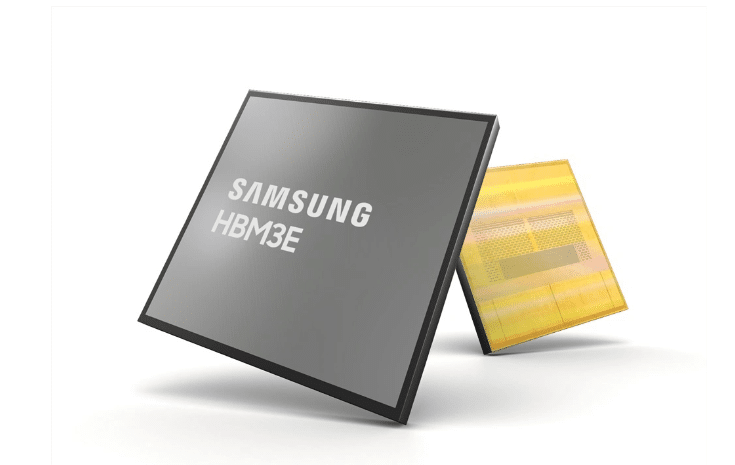Samsung has officially named its fifth HBM3E product “Shinebolt.” As Samsung ramps up HBM3E development and marketing, it is expected to catch up with SK Hynix in this field.
HBM, a high-value, high-performance product, vertically connects multiple DRAMs and significantly enhances data processing speed compared to traditional DRAM. Because of its performance advantages, HBM is often hailed as the DRAM memory of the artificial intelligence era.

HBM DRAM products follow a progression: HBM (first generation), HBM2 (second generation), HBM2E (third generation), HBM3 (fourth generation), and HBM3E (fifth generation). HBM3E is an extended version of HBM3. Relevant sources report that Samsung has initiated the distribution of Shinebolt samples to customers for quality testing. These samples feature 8-layer 24GB specifications, and Samsung will soon complete the development of 12-layer 36GB products.
Samsung Shinebolt HBM3E Memory has a maximum data transfer speed (bandwidth) approximately 50% faster than HBM3, reaching 1.228TB/S. This is equivalent to transferring 230 FHD movies (5GB each) in just one second. The key to HBM technology lies in the connection method between each layer. Samsung has employed the thermal compression non-conductive film (TC-NCF) process since the inception of HBM production, while its competitor SK Hynix uses the mass reflow underfill filling (MR-MUF) process at the bottom. The market will ultimately determine which method is superior.
Falling behind SK Hynix in HBM development and production speed, Samsung has begun to redesign its strategies to reclaim its market position. A chief element of this effort is the accelerated development of “hybrid joining” processes that have the potential to revolutionize HBM norms.
Read Also: Samsung Galaxy Z Flip5 Price Reduced by 300 Yuan, Starting From 7199 Yuan